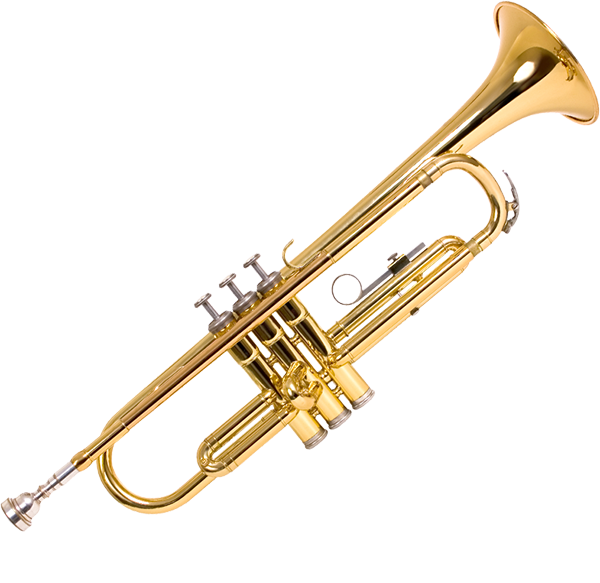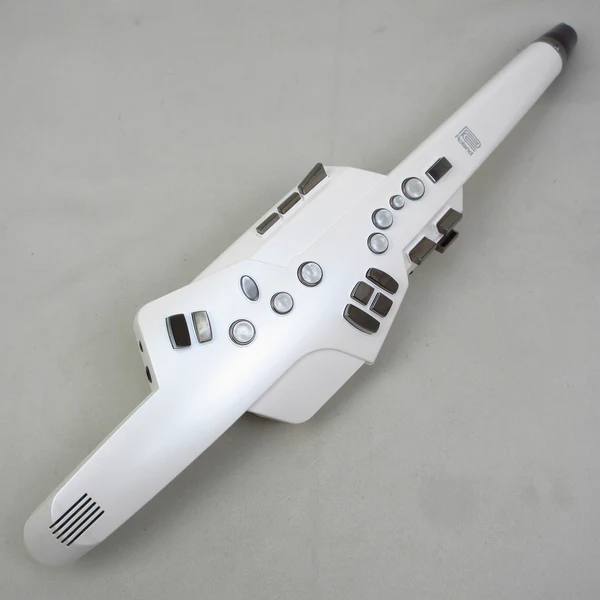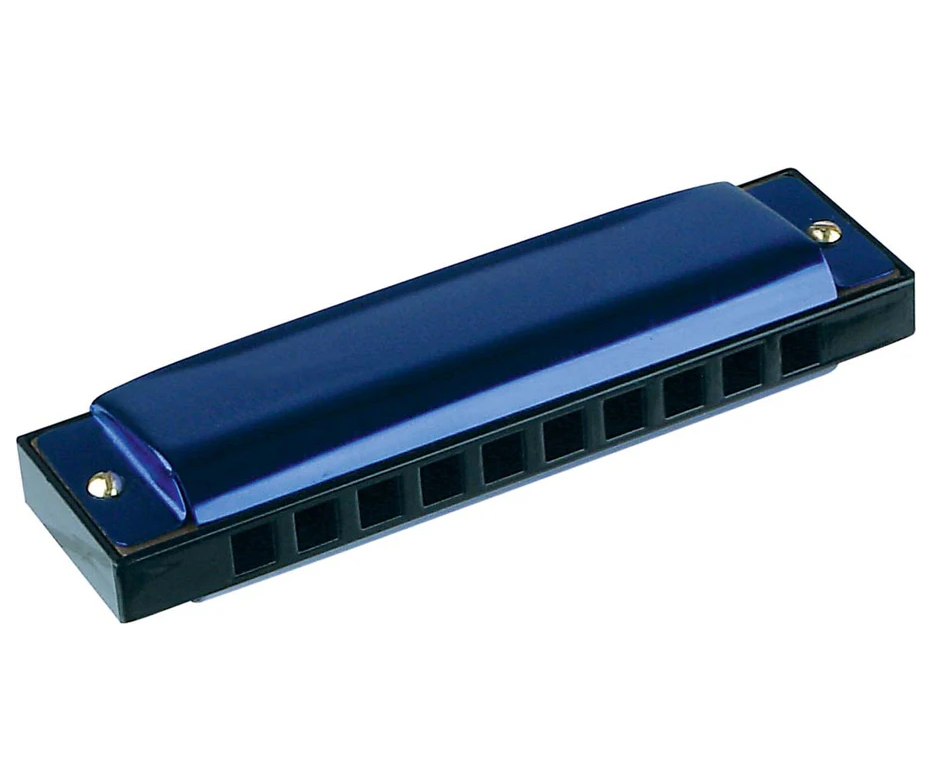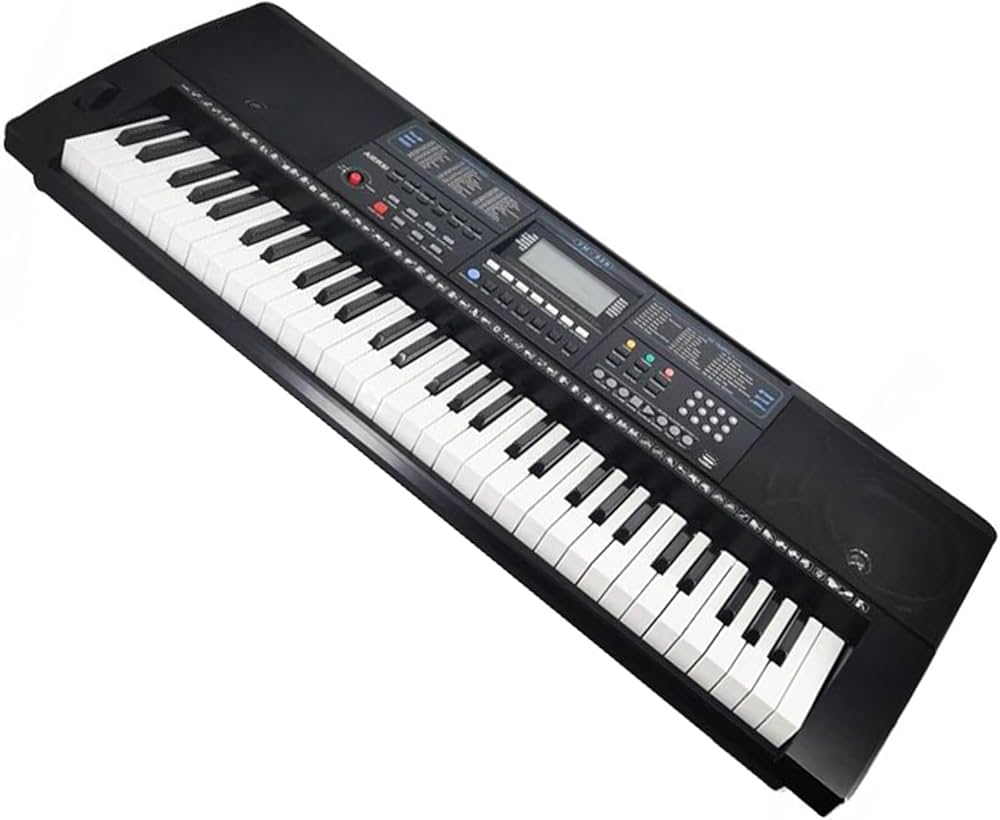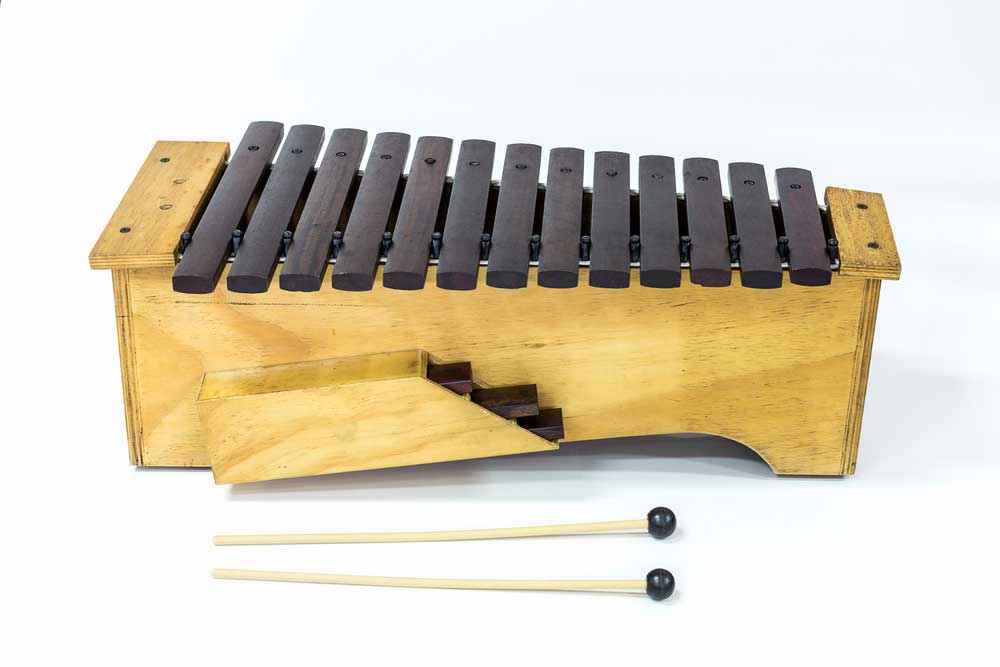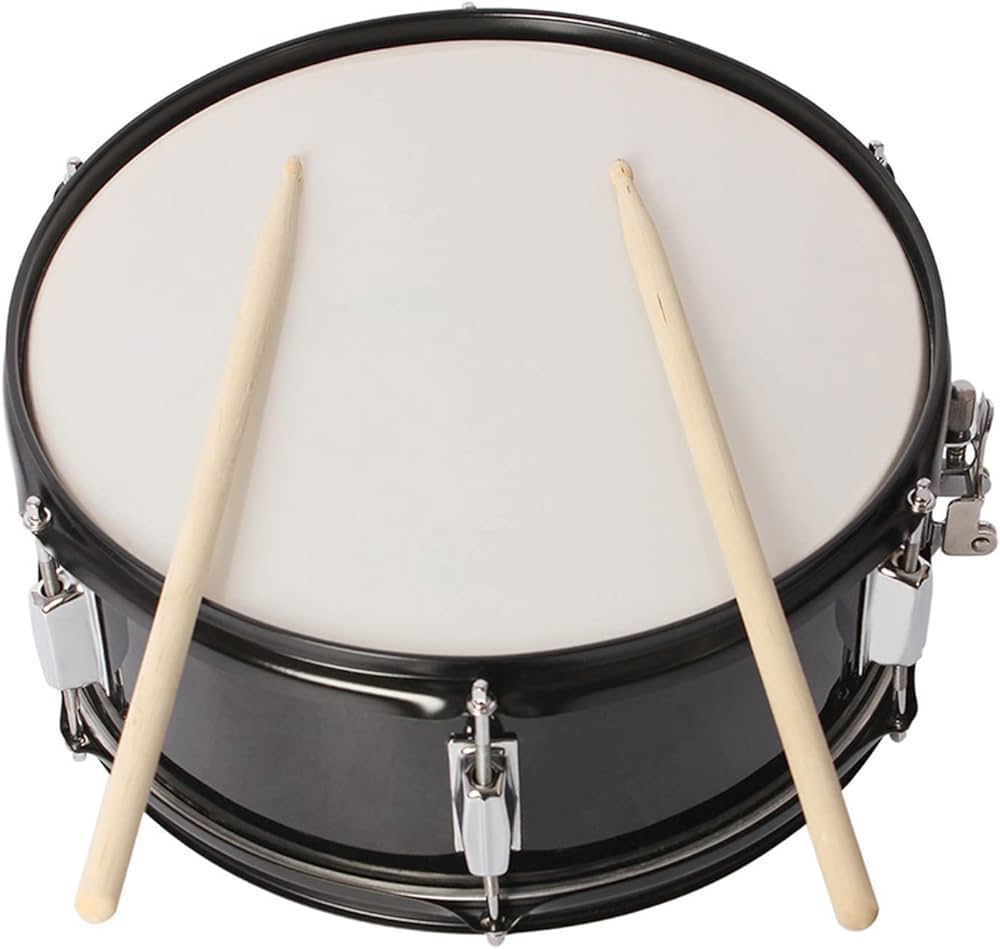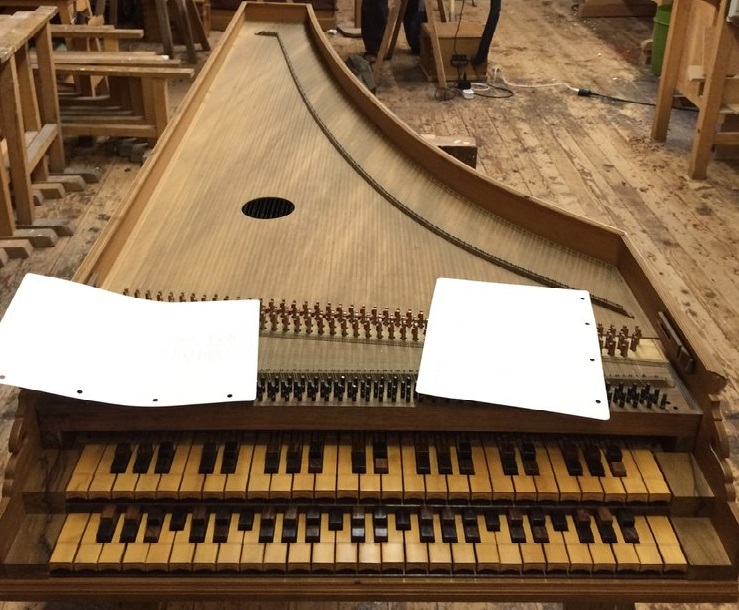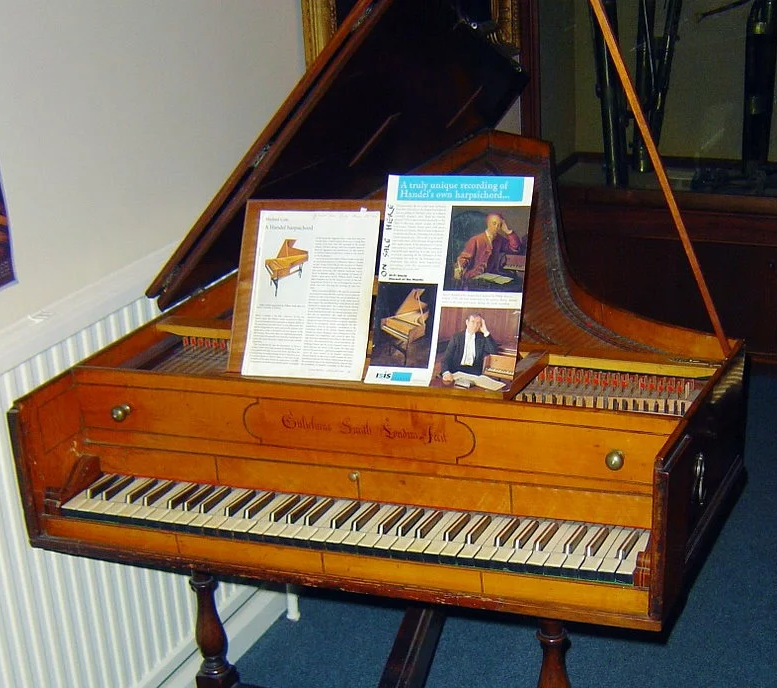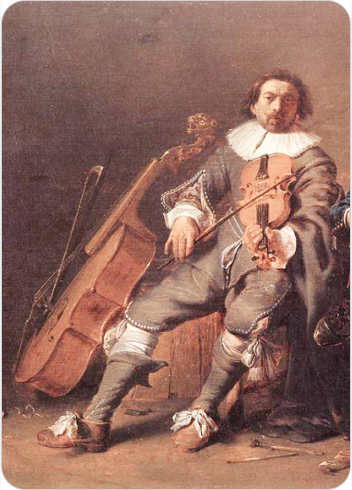Archicembalo
Keyboard Instruments
Europe
Between 1001 and 1900 AD
Video
The archicembalo is a rare and historically significant keyboard instrument invented in the 16th century by Nicola Vicentino, an Italian composer and theorist. It is a specialized form of the harpsichord, distinguished by its unique tuning system and extended range of keys. Designed to explore microtonality and just intonation, the archicembalo was an innovative tool for experimenting with ancient Greek musical theories and chromaticism.
Its name derives from the Greek prefix “archi,” meaning “chief” or “principal,” and “cembalo,” referring to a harpsichord-like instrument. Unlike standard harpsichords, the archicembalo features a keyboard with 36 keys per octave, enabling it to play intervals smaller than a semitone, known as microtones. This instrument was revolutionary in its ability to produce enharmonic intervals and modulate freely between keys without compromising the purity of intonation. It was primarily used for theoretical studies, composition, and accompaniment of vocal or instrumental music. While its complex design limited its widespread adoption, the archicembalo remains an important milestone in the history of music theory and keyboard instruments.
Type of Instrument
The archicembalo belongs to the family of keyboard instruments, specifically as a variant of the harpsichord. However, it is distinct from other harpsichords due to its focus on microtonal capabilities rather than timbral variety. Unlike conventional harpsichords that produce sound by plucking strings with quills or plectra, the archicembalo’s design emphasizes its unique tuning system. This makes it more of a theoretical and experimental instrument than one intended for general performance.
Its classification as a keyboard instrument places it alongside other historical instruments like the clavichord, organ, and virginal. However, its purpose diverges significantly from these instruments due to its role in advancing musical theory rather than serving as a primary performance tool.
History of the Archicembalo
The archicembalo was developed during the Renaissance period in Europe, specifically in Italy during the mid-16th century. Nicola Vicentino introduced this instrument in 1555 as part of his efforts to revive ancient Greek musical practices and integrate them into contemporary compositions. The Renaissance era was marked by a renewed interest in classical antiquity, and Vicentino sought to bridge the gap between ancient Greek musical systems and modern European music. Vicentino’s invention was inspired by his studies of Greek genera—diatonic, chromatic, and enharmonic—and his desire to create an instrument capable of reproducing these complex tonal structures. The archicembalo allowed composers and musicians to explore new tonalities and experiment with microtonal intervals that were otherwise impossible on traditional instruments.
Despite its innovative design, the archicembalo did not achieve widespread popularity. Its complexity made it challenging to construct and play, limiting its use primarily to scholars, theorists, and select composers. Nevertheless, it influenced subsequent developments in music theory and instrument design, paving the way for advancements in tuning systems like equal temperament.
Construction and Design
The construction of the archicembalo is intricate and highly specialized. It features two manuals (keyboards), each with 18 keys per octave, resulting in a total of 36 keys per octave across both manuals. Unlike standard keyboards that have white keys for natural notes and black keys for sharps or flats, the archicembalo divides each black key into two parts. This division allows for precise distinctions between enharmonic equivalents such as A-sharp and B-flat. The lower manual includes additional black keys between B and C as well as E and F, further expanding its tonal possibilities. Each key corresponds to a specific pitch tuned according to just intonation principles. The upper manual is designed similarly but serves different pitch configurations. The instrument’s frame houses strings corresponding to each key. These strings are plucked by quills when keys are pressed. The layout also includes jacks—mechanisms that hold the quills—and wrest pins for tuning adjustments. The intricate design requires meticulous craftsmanship to ensure accurate tuning and functionality.
Types of Archicembali
While there is no definitive classification system for different types of archicembali, variations exist based on their specific tuning systems or modifications made by individual builders. Some versions may have slight differences in key layouts or string arrangements to accommodate particular theoretical purposes.
One notable variation is Vicentino’s original design described in his treatise L’antica musica ridotta alla moderna prattica. This version includes detailed measurements for constructing an instrument capable of exploring chromatic and enharmonic music comprehensively.
Another variation is the clavicymbalum universale, which shares similarities with the archicembalo but may differ in certain structural aspects depending on regional practices or builder preferences.
Characteristics of the Archicembalo
The defining characteristic of the archicembalo is its ability to produce microtonal intervals through its extended keyboard layout. This feature enables musicians to explore tonalities beyond those available on standard 12-tone instruments. Its tuning system prioritizes pure intervals based on just intonation rather than equal temperament, resulting in harmonically rich sounds. Additionally, the dual-manual design facilitates seamless modulation between keys while maintaining intonational accuracy. This makes it particularly suited for chromatic compositions or theoretical explorations involving complex tonal relationships. Despite these advantages, playing the archicembalo requires significant skill due to its unconventional layout and tuning system. Musicians must navigate its densely packed keys while understanding its theoretical underpinnings—a challenge that limited its adoption outside scholarly circles.
Playing Techniques and Sound Modifications
The archicembalo is a highly specialized instrument with unique playing techniques due to its microtonal capabilities. Unlike standard harpsichords, it features 36 keys per octave, divided across two manuals. Each manual contains keys split into multiple parts, allowing for precise differentiation between microtonal intervals such as sharps and flats. This design enables performers to execute intricate chromatic and enharmonic passages that are impossible on conventional keyboards. Players must develop an advanced understanding of the keyboard layout to navigate the dense arrangement of keys effectively. The lower manual includes additional black keys between notes like B and C or E and F, which further complicates the playing technique. Mastery of the archicembalo requires not only technical skill but also a deep familiarity with its unique tuning system, which is based on just intonation and microtonality.
Sound modifications on the archicembalo are achieved primarily through its tuning system rather than mechanical adjustments. By altering the tuning of specific keys, performers can explore various ancient Greek genera or experiment with different temperaments. This flexibility allows the instrument to produce pure intervals and complex harmonic textures that are ideal for both historical and experimental music.
Applications in Music
The archicembalo was primarily used during the Renaissance for exploring advanced musical theories and compositions. Nicola Vicentino, its inventor, designed it to realize his theories on just intonation and ancient Greek musical scales. It became an essential tool for composers seeking to experiment with chromaticism and enharmonic intervals. One of its primary applications was in the accompaniment of vocalists and instrumentalists. Its ability to produce subtle intonational differences made it an invaluable resource for performing music that required precise tuning adjustments. Additionally, it allowed composers of chromatic vocal music to extend their experimentation into instrumental realms. The archicembalo also played a significant role in the development of modern tuning systems. By offering a practical means to explore microtonality, it influenced later innovations in equal temperament and other tuning methods. While its use declined after the Renaissance, its impact can still be seen in contemporary microtonal music and experimental compositions.
Most Influential Players
Nicola Vicentino himself was the most influential figure associated with the archicembalo. As both its inventor and primary advocate, he used it extensively to demonstrate his theories on tuning and composition. His treatise L’antica musica ridotta alla moderna prattica (1555) provided detailed instructions for constructing and playing the instrument, ensuring its legacy among Renaissance musicians.
Another notable figure was Luzzasco Luzzaschi, who mastered the archicembalo’s complexities and used it to perform highly chromatic compositions. His work demonstrated the instrument’s potential for expressive depth and technical precision.
In modern times, scholars like Manfred Cordes have contributed to reviving interest in the archicembalo by reconstructing historical models and producing recordings that showcase its unique sound. These efforts have helped reintroduce the instrument to contemporary audiences and composers.
Maintenance and Care
Maintaining an archicembalo requires specialized knowledge due to its intricate construction and unique tuning system. The instrument’s two manuals, each with numerous divided keys, demand careful attention to ensure proper alignment and functionality. Regular tuning is essential for preserving the archicembalo’s microtonal capabilities. Unlike modern instruments tuned in equal temperament, the archicembalo relies on just intonation or other historical temperaments, which require frequent adjustments based on environmental factors such as humidity and temperature. The strings must also be inspected routinely for signs of wear or corrosion. Since the archicembalo is a stringed keyboard instrument similar to a harpsichord, maintaining proper string tension is crucial for consistent sound quality. Periodic cleaning of the keyboard and internal mechanisms helps prevent dust buildup that could interfere with playability. Given its rarity, finding skilled technicians capable of repairing or restoring an archicembalo can be challenging. Owners often rely on historical documentation or collaborate with specialists in early music instruments to ensure accurate maintenance.
Cultural Significance
The archicembalo holds a unique place in musical history as a symbol of Renaissance innovation and intellectual curiosity. Its invention by Nicola Vicentino marked a significant step in bridging ancient Greek musical theories with contemporary practices. By enabling composers to explore microtonality and just intonation, it expanded the boundaries of Western music theory. During its time, the archicembalo sparked intense debates among musicologists about tuning systems and their implications for composition. These discussions influenced subsequent developments in music theory, including the eventual adoption of equal temperament as a standard tuning system.
In addition to its historical importance, the archicembalo has gained renewed interest in recent years as part of a broader revival of early music instruments. Contemporary composers have embraced its microtonal capabilities to create innovative works that challenge traditional notions of harmony and melody.
The cultural significance of the archicembalo extends beyond music into fields such as acoustics and organology. As an “epistemic tool,” it serves as a tangible representation of how instruments can shape theoretical understanding and artistic expression. Its legacy continues to inspire musicians and scholars alike, highlighting the enduring relevance of historical innovations in modern contexts.
FAQ
What is the history of the Archicembalo?
The Archicembalo was invented in the 16th century by Nicola Vicentino. It was designed to play microtonal scales, allowing enharmonic and chromatic tuning. This instrument expanded musical possibilities beyond the standard keyboard. It was mainly used in Renaissance and early Baroque music.
What are the unique features of the Archicembalo?
The Archicembalo has a complex keyboard with more keys per octave than a standard harpsichord. It supports quarter tones, making it ideal for microtonal compositions. Its tuning system allows for pure intervals and enharmonic distinctions. This feature was groundbreaking for Renaissance music theory.
What materials were used in the construction of the Archicembalo?
The Archicembalo was primarily built from high-quality wood, such as spruce and cypress, for resonance. Its strings were made of brass or iron, similar to harpsichords. The keyboard had wooden keys, sometimes covered with ivory. The instrument's frame was reinforced for stability and durability.
 Links
Links
References
Other Instrument
Categories

